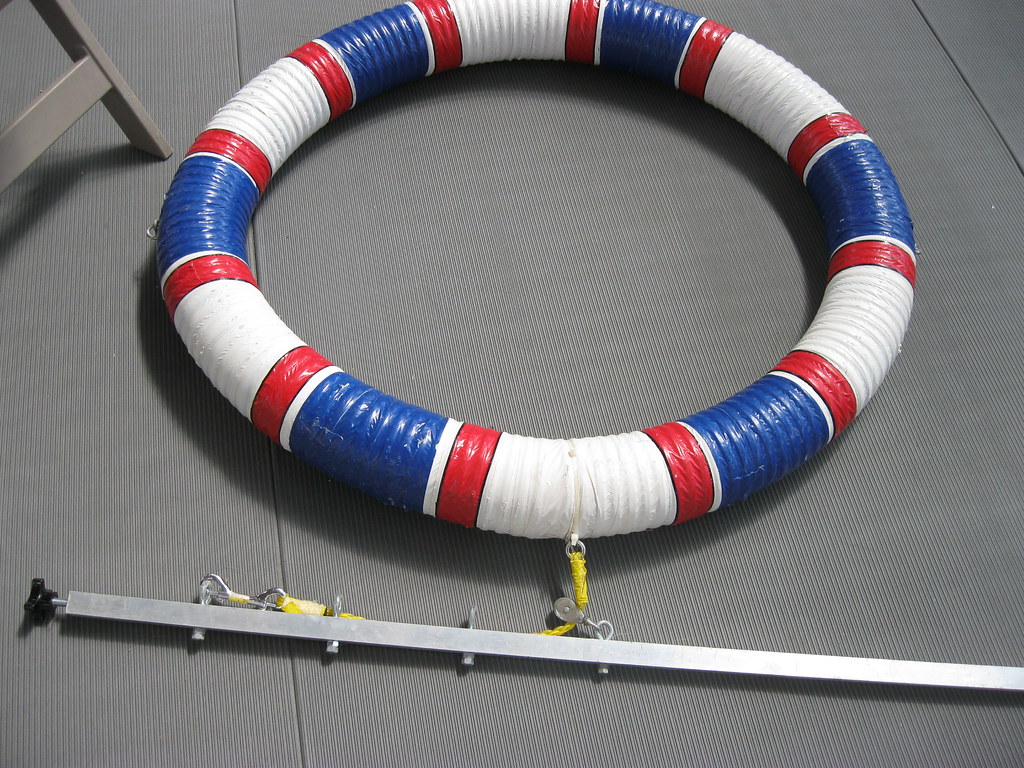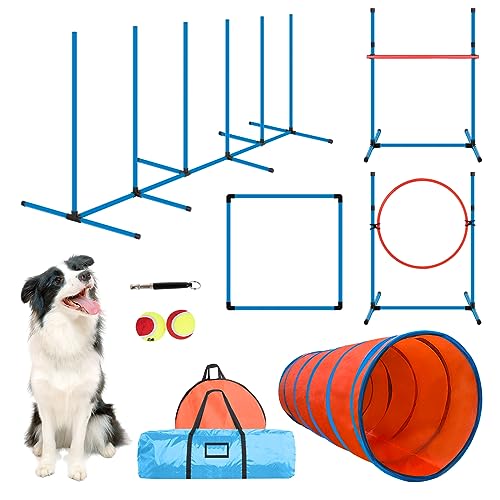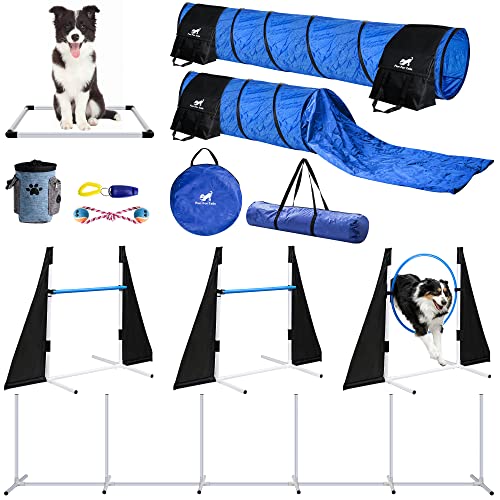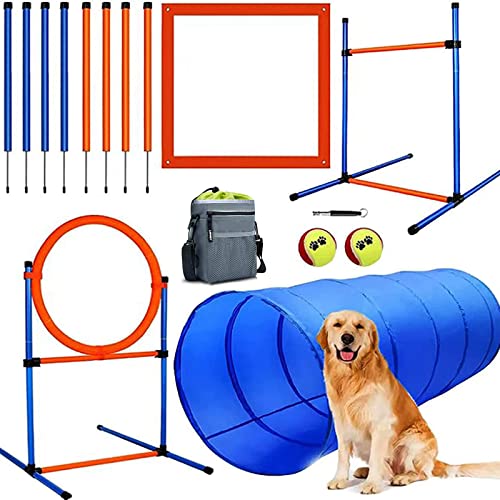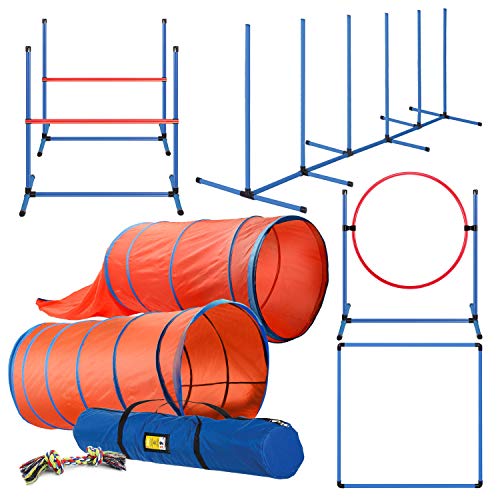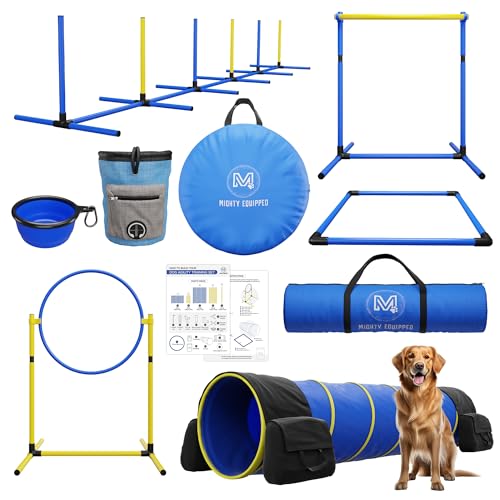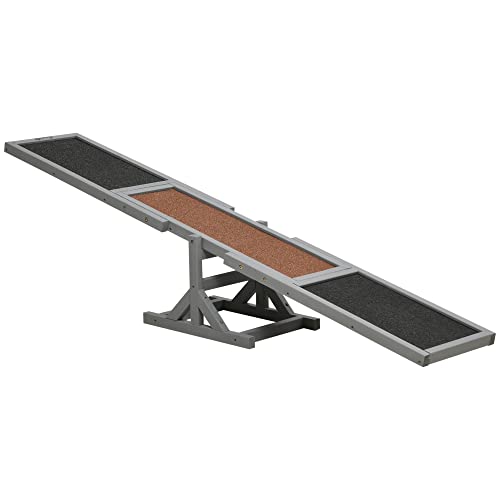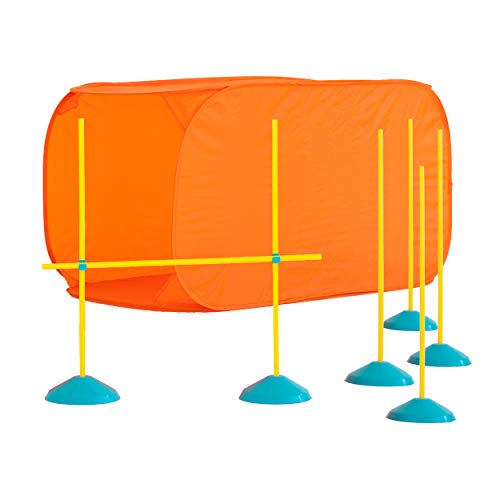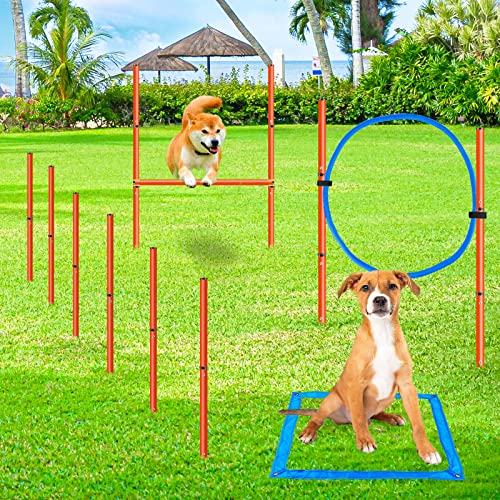Are you looking to train your dog in agility and wondering how to choose the right size and weight for agility tunnels? Look no further, as we delve into the world of dog agility equipment to provide you with all the essential information you need. The size and weight of agility tunnels play a crucial role in the training process, as they can significantly impact your dog’s performance and safety.
Agility tunnels are widely used in training dogs for agility competitions and recreational purposes. These tunnels are designed to simulate various obstacles that dogs encounter during agility courses, engaging their natural instincts and challenging their physical abilities. They offer a thrilling experience for both dogs and their handlers, promoting bonding and enhancing the dog’s overall athleticism.
However, selecting the right size and weight for agility tunnels can be a daunting task for many dog owners. It is crucial to consider your dog’s breed and skill level when making this decision. Different dog breeds have varying sizes and physical attributes, which should be taken into account to ensure that the tunnel is appropriate for their body structure and capabilities. Additionally, considering your dog’s skill level is vital to provide a safe and suitable training experience.
In this article, we will guide you through the process of choosing the right size and weight for agility tunnels based on your dog’s breed and skill level. We will discuss the importance of these factors and provide practical tips to help you make an informed decision. So, let’s dive into the world of dog agility and ensure your furry friend gains the maximum benefit from their training sessions.
Agility Training Equipment for Dogs,Obstacle Course Jumping Practice Includes Adjustable High Hurdle,6 Weave Poles,Extended Tunnel,Jumping Ring,Square Pause Box,2 Balls,Whistle and 2 Carrying Bags
Function:
The Function of Agility Tunnels
Agility tunnels are essential pieces of equipment that play a crucial role in dog agility training and competitions. These tunnels are designed to simulate various obstacles that dogs encounter during agility courses, such as tunnels and pipes. The primary function of agility tunnels is to improve a dog’s speed, agility, and overall physical fitness.
By incorporating agility tunnels into training routines, dogs can develop their coordination, balance, and awareness of spatial relationships. The tunnels encourage dogs to sharpen their problem-solving skills, as they navigate through tight spaces and quickly change directions. Additionally, agility tunnels aid in the development of a dog’s confidence, as they conquer obstacles and perform various agility maneuvers.
Case Study: Dog breed A, known for its exceptional speed and agility, significantly improved its performance in agility competitions after consistent training with agility tunnels. The dog’s handlers reported that the tunnel exercises helped enhance the dog’s focus, speed, and ability to execute complex agility maneuvers efficiently.
Uses:
Uses of Agility Tunnels
Agility tunnels serve multiple purposes in dog training and recreational activities. They are extensively used in agility competitions and trials to test a dog’s abilities, athleticism, and obedience. These versatile tunnels can be used for individual training sessions or in group settings, allowing dogs to refine their skills and engage in socialization with other participating dogs.
Agility tunnels are also highly beneficial for owners who want to provide their dogs with physical and mental stimulation. The tunnels offer a fun and engaging way for dogs to release energy, prevent boredom, and improve their overall well-being. Moreover, agility tunnels can be used as a tool for behavior modification, helping dogs overcome fears, build confidence, and reinforce positive behaviors.
Example: In a training facility, dog owners of various breeds and skill levels utilize agility tunnels to enhance their dogs’ obedience and athleticism. The tunnels create an exciting and challenging environment that keeps the dogs motivated and focused during training sessions.
Design:
The Design of Agility Tunnels
Agility tunnels come in a variety of designs, each catering to different purposes and skill levels. The most common type of agility tunnel is the standard tunnel, which consists of a long fabric tube supported by a sturdy inner framework. These tunnels are flexible and can be easily maneuvered and adjusted to create different configurations in agility courses.
Another popular design is the collapsed tunnel, which features a collapsed section that dogs must push through. This design enhances a dog’s problem-solving abilities and requires them to use their bodies and strength to move through the obstacle. Collapsed tunnels are particularly beneficial for advanced dogs accustomed to standard tunnels.
Case Study: During agility trials, breed B, known for its ability to think quickly and adapt, showcased exceptional performance. The dog successfully navigated through collapsed tunnels, showcasing both physical strength and mental agility.
Build Quality:
The Importance of Agility Tunnel Build Quality
When choosing agility tunnels for your dog, it’s crucial to consider their build quality. Well-constructed tunnels ensure durability, safety, and longevity. Look for tunnels made from high-quality materials, such as strong nylon or polyester fabric, which can withstand rigorous use and outdoor conditions.
The tunnel’s frame is equally important, as it provides stability and support. Opt for tunnels with sturdy frames that can withstand dogs’ impact and won’t collapse during agility training. Additionally, check for features like reinforced stitching, secure fasteners, and non-slip surfaces to ensure your dog’s safety while using the tunnel.
Example: Dog trainers working outdoors in various weather conditions highly appreciate agility tunnels with exceptional build quality. These tunnels are designed with waterproof materials and reinforced frames, allowing for year-round training without compromising the dogs’ comfort or safety.
Primary Features:
Primary Features to Consider
When selecting agility tunnels, several primary features should be taken into account. Firstly, consider the size and length of the tunnel. Different dog breeds and skill levels require varying tunnel dimensions to ensure an appropriate challenge. It’s important to choose a tunnel length that allows dogs to comfortably navigate through while maintaining speed and agility.
Portability is another essential feature to consider. Agility tunnels that are lightweight, quickly foldable, and easy to transport ensure convenience during training sessions or competitions. Furthermore, look for tunnels equipped with anchoring options, such as ground stakes or sandbags, to prevent movement during use.
Lastly, choose tunnels with adjustable entrances or removable obstacles to cater to dogs at different stages of training. This flexibility enables the gradual increase of challenge as dogs progress and acquire more advanced agility skills.
Recommended dog agility equipment
| Pros | Cons |
|---|---|
|
|
Top 10 rated dog agility equipment
Choosing the Right Dog Agility Equipment
When it comes to dog agility training, having the right equipment is essential. Whether you’re a seasoned competitor or just starting out, investing in high-quality agility equipment can make a significant difference in your dog’s performance. In this buying guide, we will walk you through the factors to consider when evaluating different dog agility equipment and provide tips on making an informed purchase decision.
Evaluating Equipment Quality
The first factor to consider when buying dog agility equipment is the quality of the product. Look for equipment that is made from durable materials such as PVC or aluminum. These materials are strong enough to withstand the wear and tear of training sessions and outdoor conditions. Avoid lightweight or flimsy equipment that may break, posing a risk to both you and your dog.
Equipment Versatility
Next, consider the versatility of the equipment. Look for items that can be easily adjusted to accommodate different skill levels and dog sizes. Agility equipment that is adjustable allows you to customize the training experience for your specific needs. This versatility ensures that the equipment will continue to serve you as your dog progresses in their agility training.
Portability and Storage
Portability and storage are important factors to consider, especially if you plan on using the equipment in different locations or have limited space. Opt for lightweight and collapsible equipment that can be easily transported and stored. Look for designs that allow for easy disassembly and reassembly, without compromising stability and safety.
Safety Features
Safety should always be a top priority when choosing dog agility equipment. Look for features such as non-slip surfaces and rounded corners to minimize the risk of injury. Equipment that is securely anchored or has anti-tip mechanisms ensures stability during training sessions. Additionally, consider investing in equipment with safety accessories, such as breakaway tires or adjustable jump heights, to further protect your dog.
Budget Considerations
Before making a purchase, it’s important to consider your budget. Dog agility equipment can vary significantly in price, so it’s crucial to set a realistic budget and stick to it. Take the time to compare prices from different suppliers and consider the long-term value of the equipment. While it may be tempting to choose the cheapest option, keep in mind that investing in durable, high-quality equipment will save you money in the long run as it will require fewer repairs or replacements.
Customer Reviews and Recommendations
Lastly, take advantage of customer reviews and recommendations. Read through online reviews and seek advice from experienced trainers or competitors who have used the equipment you are considering. Their firsthand experiences can provide valuable insights and help you make an informed decision. Additionally, consider reaching out to local agility clubs or trainers for recommendations on reputable suppliers.
In conclusion, choosing the right dog agility equipment requires careful consideration of various factors. Evaluate the quality, versatility, portability, and safety features of the equipment before making a purchase. Set a realistic budget and consider long-term value. Use customer reviews and recommendations to guide your decision-making process. By investing in the right equipment, you’re setting yourself and your dog up for a successful and enjoyable agility training experience.
Best choice for dog agility equipment in 2023
Agility Training Equipment for Dogs,Obstacle Course Jumping Practice Includes Adjustable High Hurdle,6 Weave Poles,Extended Tunnel,Jumping Ring,Square Pause Box,2 Balls,Whistle and 2 Carrying Bags
Dog Agility Equipment Construction Instructions: YOU CAN! Build Better Training Obstacles for your Dog
PawHut Wooden Dog Agility Seesaw for Training and Exercise, Platform Equipment Run Game Toy, Weather Resistant Pet Supplies, 71" L x 12" W x 12" H, Gray
$79.99
How to Find and Choose the Right Dog Agility Equipment on Amazon
When it comes to finding and choosing the right dog agility equipment on Amazon, there are a few important factors to consider. Here’s a step-by-step guide to help you make the best choice:
1. Determine Your Dog’s Size and Abilities
Before browsing for agility equipment, it’s crucial to understand your dog’s size, breed, and abilities. Different dogs require different types and sizes of equipment. For example, smaller dogs may need lower jumps, while larger dogs may require sturdier and higher jumps. Assess your dog’s athleticism and capabilities to get a clear idea of what equipment will suit them best.
2. Research and Compare Products
Start by researching the different types of dog agility equipment available on Amazon. Look for agility sets, tunnels, weave poles, jumps, and other obstacles that are suitable for your dog’s size and breed. Read product descriptions, customer reviews, and ratings to get an understanding of the durability, quality, and ease of use of each item. Compare different products to find the one that meets your dog’s needs and your budget.
3. Consider Portability and Storage
If you plan to set up the agility equipment outdoors or travel with it, consider the portability and storage options. Look for equipment that is lightweight, easy to assemble, and compact. Check for collapsible tunnels and foldable jumps that can be stored conveniently when not in use.
4. Look for Adjustable Options
Some agility equipment, such as jumps, allow for adjustability. Choosing equipment with adjustable heights or lengths can be beneficial, especially if you have multiple dogs of different sizes or want to gradually increase the difficulty level for your dog as they progress in their training.
5. Check for Safety Features
Ensure that the agility equipment you select has safety features to protect your dog from injuries. Look for sturdy constructions, non-slip surfaces, and rounded edges to prevent accidents. It’s also a good idea to choose equipment with removable or replaceable parts so that you can easily maintain and repair any wear and tear.
6. Check the Seller’s Reputation
Before making a purchase, check the seller’s reputation by looking at their ratings, reviews, and feedback from other customers. Ensure that the seller is reputable and has a history of providing quality products and reliable customer service. This will give you peace of mind and increase the chances of receiving a genuine and satisfactory product.
7. Consider Your Budget
Lastly, consider your budget when selecting dog agility equipment on Amazon. Determine how much you are willing to spend and find options that fit within your price range. However, prioritize quality and durability over cost savings to ensure the equipment lasts and provides a safe and enjoyable experience for both you and your dog.
By following these steps and considering all the factors mentioned above, you can confidently find and choose the right dog agility equipment on Amazon that will meet your dog’s needs and provide them with a fun and challenging training experience.
Cheapest alternatives for dog agility equipment
FAQ
1. What is dog agility equipment?
Dog agility equipment consists of various types of obstacles and training aids used to create a challenging course for dogs to navigate through. It includes hurdles, tunnels, weave poles, A-frames, dog walks, and more.
2. Is dog agility suitable for all dogs?
While most dogs can participate in agility training, it is essential to consider your dog’s health, age, and breed. Dogs with existing health conditions or certain physical limitations may not be suitable for intense agility activities.
3. How do I choose the right dog agility equipment?
When selecting dog agility equipment, consider your dog’s size, breed, and skill level. Look for well-built and sturdy equipment manufactured specifically for agility training. It’s important to choose equipment that is appropriate for your dog’s size and abilities.
4. Can I set up dog agility equipment in my backyard?
Yes, you can set up dog agility equipment in your backyard, provided you have enough space and a suitable surface. Ensure that the equipment is securely anchored to the ground and that the area is safe for your dog to run and play.
5. How do I train my dog to use agility equipment?
Start by introducing your dog to one piece of equipment at a time, using positive reinforcement techniques such as treats and praise. Gradually increase the difficulty level and incorporate multiple obstacles. Consistent training and patience are key to teaching your dog the proper techniques for each piece of equipment.
6. Can I use homemade agility equipment?
While homemade agility equipment can be a cost-effective option, it’s crucial to ensure its safety and durability. Make sure the materials used are sturdy and non-toxic for your dog. It is recommended to closely follow appropriate DIY plans or consult with experienced trainers to ensure the equipment meets safety standards.
7. How do I maintain dog agility equipment?
Regularly inspect your dog agility equipment for any signs of wear and tear. Replace or repair damaged parts immediately to ensure your dog’s safety. Clean the equipment regularly, using gentle pet-friendly cleaning products to maintain its longevity.
8. Can older dogs participate in agility training?
With proper guidance and consideration of their physical limitations, older dogs can participate in agility training at a reduced intensity level. It is important to consult with your veterinarian to ensure your older dog’s fitness for agility activities, making modifications as necessary to accommodate their age and health.
9. Is agility training suitable for all dog breeds?
Agility training can be enjoyed by a wide variety of dog breeds. However, certain breeds may excel more given their natural agility and athleticism. It’s important to remember that every dog is unique, and training should be tailored to their individual abilities and needs.
10. Where can I find dog agility equipment?
You can find dog agility equipment online through various pet supply retailers and agility equipment manufacturers. Additionally, you may also find local stores or trainers specializing in agility equipment who can assist you in finding the right equipment for your needs.
In conclusion, choosing the right size and weight for agility tunnels is crucial in ensuring an optimal training experience for your dog, tailored to their breed and skill level. By carefully assessing your pet’s needs, you can select a tunnel that offers the right level of challenge and safety. This valuable choice will not only enhance your dog’s agility skills but also contribute to their overall physical fitness, mental stimulation, and bond with you as their trainer. The benefits of agility tunnels include improved coordination, increased confidence, and the opportunity to engage in a fun and rewarding activity together. So, invest in the right-sized and appropriately weighted agility tunnel, and watch your dog thrive in their agility training journey.



